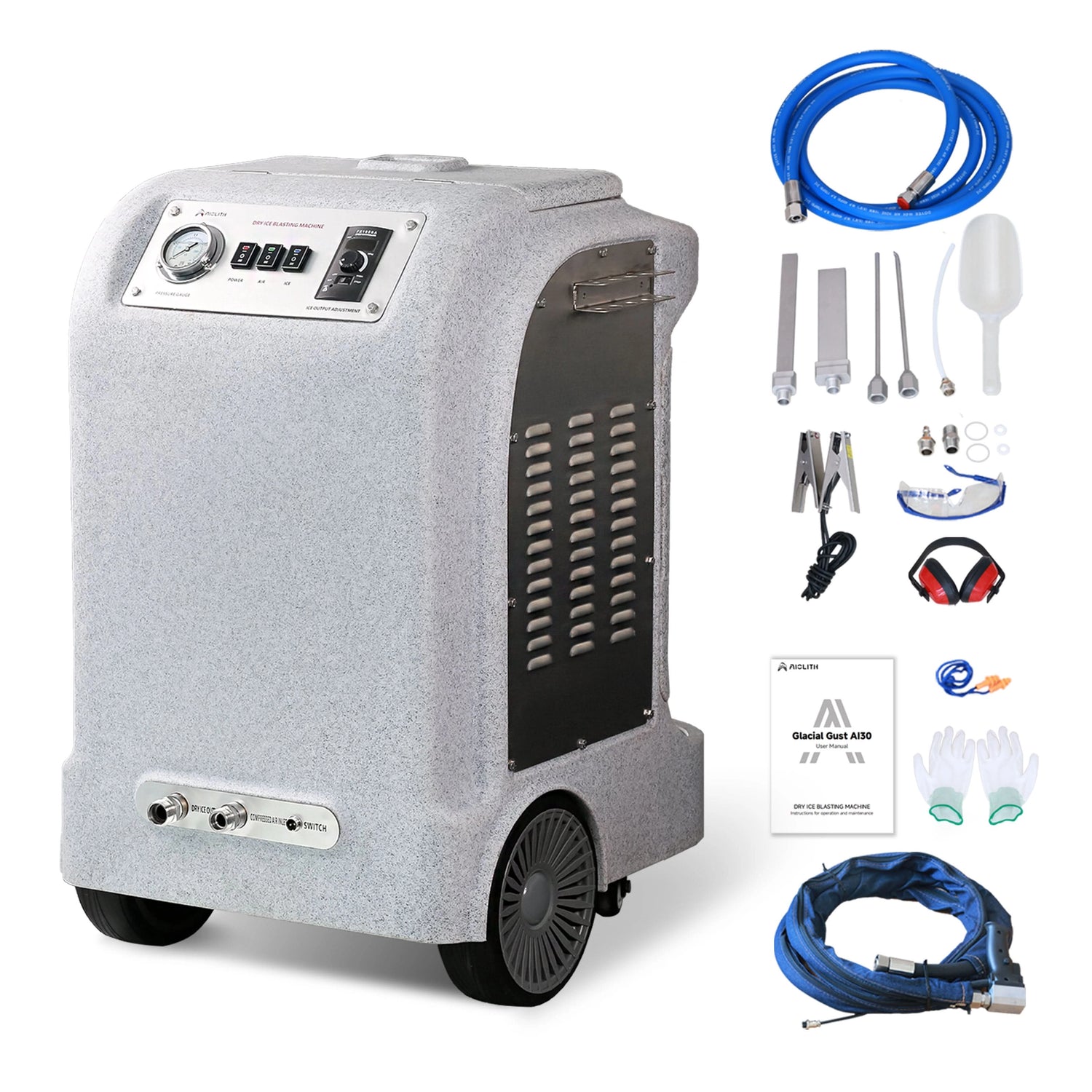How to Scrub a Filthy Floor? 7 Proven Methods Businesses Use and Why Aiolith Scrubbers Are the Smartest Investment
Share
The Real Pain Point: Filthy Floors in High-Traffic Areas
In commercial and industrial environments, floors quickly accumulate grease, grime, and debris. Traditional cleaning methods like mopping often make the problem worse by spreading dirt instead of removing it. According to the Centers for Disease Control and Prevention (CDC, 2020), poor floor hygiene increases the risk of slips, bacterial growth, and workplace accidents (CDC Source).
For facility managers and cleaning contractors, the challenge is clear: how to scrub a filthy floor effectively without wasting labor and supplies.
Step-by-Step Guide: How to Scrub a Filthy Floor
- Clear the Area – Remove furniture, rugs, and obstacles for safe operation.
- Sweep or Vacuum Debris – Loose dirt and dust must be cleared to avoid scratches.
- Select the Right Cleaning Solution – Use low-foam, pH-appropriate detergents designed for commercial floors.
- Choose the Best Tool – Decide between manual scrubbing or a commercial scrubber (like Aiolith).
- Apply Detergent – Spread evenly across the surface.
- Scrub with Correct Pressure – Use bristle brushes or pads for deep cleaning.
- Rinse and Extract Dirty Water – Prevents dirt from reabsorbing into grout or pores.
- Allow Floors to Dry – Fast-drying machines reduce slip hazards.
Comparing Floor Cleaning Methods
| Method | Effectiveness | Labor Intensity | Water & Chemical Use | Best For |
|---|---|---|---|---|
| Manual Mopping | Low – spreads dirt around | High | High | Small, lightly soiled areas |
| Hand Scrubbing with Brush | Medium – effective but time-consuming | Very High | Moderate | Spot cleaning, residential |
| Steam Cleaning | Medium-High – sanitizes, lifts grime | Moderate | Low | Kitchens, restrooms |
| Generic Floor Scrubber | High – cleans efficiently | Low | Moderate | Retail or office spaces |
| Aiolith Floor Scrubber | Very High – deep cleans & dries fast | Very Low | 30–40% less | Warehouses, malls, hospitals, airports |
Why Aiolith Scrubbers Are the Best for Filthy Floors
Aiolith commercial scrubbers in the $4,000–$6,000 range are engineered to solve the toughest floor-cleaning challenges:
- Hybrid sweeping + scrubbing: Handles debris and grime in one pass.
- Adjustable brush pressure: Safely lifts stubborn dirt without damaging floors.
- Eco-dosing system: Reduces detergent and water usage by up to 40%.
- High-performance suction: Ensures no dirty water remains, leaving dry, safe floors.
- Durable construction: Built for demanding daily use in high-traffic environments.
These features make Aiolith scrubbers the most cost-effective solution for filthy floors in commercial and industrial spaces.
The Cost of Manual vs. Machine Scrubbing
| Factor | Manual Scrubbing | Aiolith Scrubber ($4,000–$6,000) |
|---|---|---|
| Initial Investment | $50–$200 | $4,000–$6,000 |
| Labor Hours (per 5,000 m²) | 40–50 hours | 8–10 hours |
| Annual Labor Cost | $60,000+ | $25,000–$30,000 |
| Water & Chemical Use | High | 30–40% less |
| ROI Timeline | None | 18–24 months |
Businesses typically recover their investment in under two years, making machine scrubbing far more economical than manual methods.
Health and Safety Benefits
Dirty floors aren’t just unsightly—they’re dangerous. The Health and Safety Executive (HSE, 2020) identifies slips and trips as one of the leading workplace accidents, often caused by greasy or wet flooring (HSE Source).
Aiolith scrubbers minimize these risks by:
- Removing grime effectively
- Drying floors quickly
- Reducing chemical residues
Environmental Advantages of Aiolith Machines
Sustainability is a major concern in modern facility management. Aiolith integrates eco-efficient cleaning systems that comply with the European Chemicals Agency (ECHA, 2022) guidelines on safe cleaning product usage (ECHA Source).
This reduces environmental impact while maintaining professional-grade cleanliness.
Best Practices for Scrubbing Extremely Dirty Floors
- Pre-soak greasy spots with a degreasing solution.
- Use stiff bristle brushes for grout and textured floors.
- Adjust machine speed and brush pressure for heavy buildup.
- Perform daily maintenance scrubbing to prevent future buildup.
- Schedule deep scrubbing monthly for long-lasting floor quality.
FAQs: How to Scrub a Filthy Floor
Q1: Can a mop clean extremely dirty floors?
A: No. Mops often push grime around and fail to clean grout or deep dirt.
Q2: Do I need special detergents for filthy floors?
A: Yes. Use low-foam, commercial-grade detergents to break down heavy soil.
Q3: Are Aiolith machines safe for delicate surfaces?
A: Yes. Adjustable brush pressure allows cleaning of tile, vinyl, and sealed wood.
Q4: How long do Aiolith scrubbers last?
A: With proper maintenance, 7–10 years.
Q5: Are they worth the $4,000–$6,000 investment?
A: Absolutely. Labor, water, and chemical savings deliver ROI within 18–24 months.
Conclusion: The Smarter Way to Scrub Filthy Floors
Scrubbing filthy floors by hand is not only exhausting but also inefficient. For businesses managing large, high-traffic spaces, Aiolith commercial scrubbers in the $4,000–$6,000 range provide the best balance of cost savings, safety, and performance.
They clean deeply, sanitize grout, reduce labor costs, and leave floors dry and safe in a fraction of the time manual methods take. For facility managers, investing in an Aiolith scrubber is more than a purchase—it’s a long-term solution to cleaner, safer, and more professional environments.
References
Centers for Disease Control and Prevention (CDC). (2020). Environmental cleaning and disinfection guidelines. Read here.
Health and Safety Executive (HSE). (2020). Preventing slips and trips at work. Available here.
European Chemicals Agency (ECHA). (2022). Cleaning product sustainability regulations. Read here.

